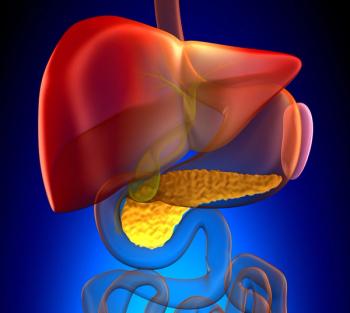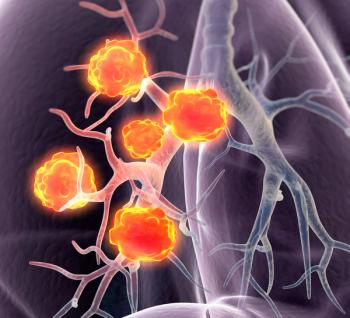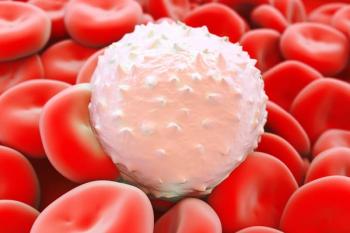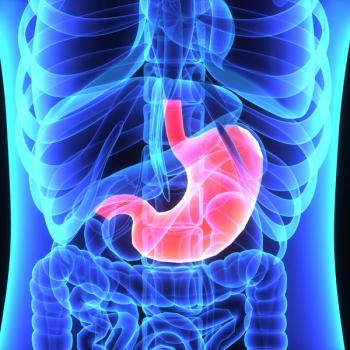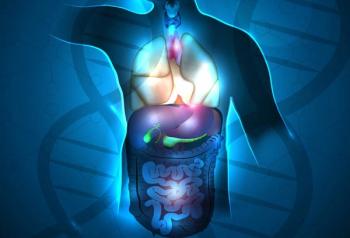
FDA OKs Pembrolizumab/Chemo in HER2- Gastric/GEJ Cancer
First-line pembrolizumab plus chemotherapy has been approved by the FDA for patients with HER2-negative gastric or gastroesophageal junction adenocarcinoma.
The FDA has approved first-line pembrolizumab (Keytruda) plus fluoropyrimidine- and platinum-containing chemotherapy for patients with HER2-negative gastric or gastroesophageal junction (GEJ) adenocarcinoma, according to a press release from the organization.
Results from the phase 3 KEYNOTE-859 trial (NCT03675737) led to the approval. Topline results included a median overall survival of 12.9 months (95% CI, 11.9-14.0) in the pembrolizumab arm compared with 11.5 months (95% CI, 10.6-12.1) in the placebo arm (HR, 0.78; 95% CI, 0.70-0.87; P <.0001). The median progression-free survival (PFS) was 6.9 months (95% CI, 6.3-7.2) in the pembrolizumab arm vs 5.6 months (95% CI, 5.5-5.7) in the placebo arm (HR, 0.76; 95% CI, 0.67-0.85; P <.0001).
A total of 1579 patients were randomly assigned 1:1 to receive pembrolizumab at 200 mg. The placebo arm consisted of physician’s choice chemotherapy of cisplatin dose at 80 mg/m2 plus 800 mg/m2 of 5-FU per day for 5 days or 130 mg/m2 of oxaliplatin on day 1 plus 1000 mg/m2 of capecitabine twice a day for 14 days of each 21-day cycle.
The recommended dose of pembrolizumab is 200 mg every 3 weeks or 400 mg every 6 weeks until patients experience disease progression or toxicity.
The primary end point was OS and the secondary end points included PFS, overall response rate (ORR), and duration of response (DOR) by blinded independent central review which is modified for 10 target lesions maximum or 5 target lesions per organ.
In the pembrolizumab arm, the ORR was 51% (95% CI, 48%-55%) and 42% (95% CI, 38%-45%) in the placebo arm (P <.0001). The median DOR was 8.0 months (95% CI, 7.0-9.7) in the pembrolizumab arm and 5.7 months (95% CI, 5.5-6.9) in the placebo arm.
During the prespecified analysis, there was a significant improvement in OS, PFS, and ORR for patients receiving pembrolizumab which was analyzed on tumors expressing PD-L1 with a combined positive score between 1 and 10.
Adverse effects leading to discontinuation of pembrolizumab occurred in 15% of patients, and diarrhea and infections led to permanent discontinuation in 1% each.
Reference
FDA approves pembrolizumab with chemotherapy for HER2-negative gastric or gastroesophageal junction adenocarcinoma. News release. FDA. November 16, 2023. Accessed November 16, 2023. https://shorturl.at/acnQ1
Newsletter
Stay up to date on recent advances in the multidisciplinary approach to cancer.


